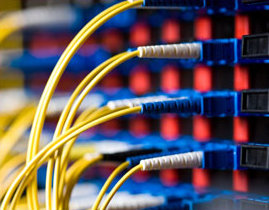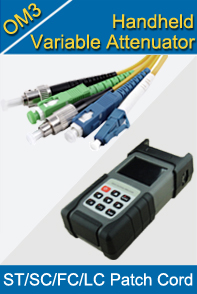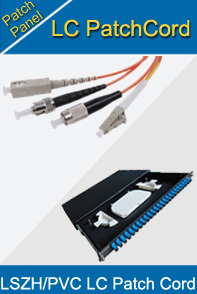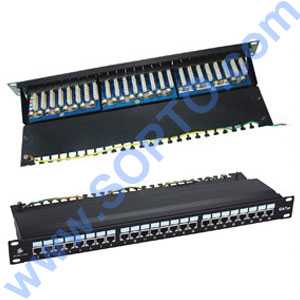-

- Sopto Home
-

- Special Topic
-

- Patch Cord Knowledge
-

- What is the Difference between Cat6 and Cat6a?
Patch Cord Knowledge
- Fiber Optic Connector Ferrule Design
- Fiber Optic Connector Design
- E2000 to ST Fiber Patch Cable Overview
- Acceptable and Unacceptable Fiber Connector End-Face Finishes
- Using Wipes and Cleaning Cassettes to Clean Fiber Patch Cords
- Not-Too-Tight Mating of Fiber Optic Connectors
- Matching Gel and Oils Contamination about Fiber Optic Connectors
- The Effect of Improper Use of Fiber Optic Connectors
- Why Fiber Optic Connectors are Fragile?
SOPTO Special Topic
Certificate



Guarantee
Except products belongs to Bargain Shop section, all products are warranted by SOPTO only to purchasers for resale or for use in business or original equipment manufacturer, against defects in workmanship or materials under normal use (consumables, normal tear and wear excluded) for one year after date of purchase from SOPTO, unless otherwise stated...
Return Policies
Defective products will be accepted for exchange, at our discretion, within 14 days from receipt. Buyer might be requested to return the defective products to SOPTO for verification or authorized service location, as SOPTO designated, shipping costs prepaid. .....
Applications
 Fiber Patch Cords have a widely application. Where the need for the optical fiber connection, where you need fiber optic patch cords.
Fiber Patch Cords have a widely application. Where the need for the optical fiber connection, where you need fiber optic patch cords.
Testing Equipment
FTTX+ LAN
Optical Fiber CATV
Optical Communication System
Telecommunication
SOPTO Products
- Fiber Optic Transceiver Module
- High Speed Cable
- Fiber Optical Cable
- Fiber Optical Patch Cords
- Splitter CWDM DWDM
- PON Solution
- FTTH Box ODF Closure
- PCI-E Network Card
- Network Cables
- Fiber Optical Adapter
- Fiber Optical Attenuator
- Fiber Media Converter
- PDH Multiplexers
- Protocol Converter
- Digital Video Multiplexer
- Fiber Optical Tools
- Compatible
Related Products
Performance Feature
Good Water-proof
Low insertion loss;
low reflection loss;
Stability, good repeatability;
High-precision ceramic ferrule;
Compatible with NTT standard;
Precision Grinding and fully testing;
Compliance with international standards
Patch Cord Knowledge
Recommended


What is the Difference between Cat6 and Cat6a?
It may sound like a single lowercase letter is all that sets Cat6 apart from Cat6a, but that one little letter stands for augmented, and represents a world of difference. Even while Cat6 is still gaining popularity as the go-to cable standard for network installers, Cat6a has come along in and outdone it in performance, crosstalk prevention, and even size. Trying to decide which one is right for you or your clients? Please read the following.
Performance
Let’s start with the basics: Cat6 and Cat6a were designed for Gigabit Ethernet and other standard network protocols, so they can both handle 10BASE-T, 100BASE-TX, 1000BASE-TX, and 10GBASE-T. The differences don’t become clear until you start looking at speed and distance.Cat6 cable is rated for 250 MHz, so it has a reduced maximum length (37-55 meters) when used for 10GBASE-T applications. On the other hand, Cat6a doubles that capability by performing at up to 500 MHz, which allows 10GBASE-T to be run over longer distances of up to 100 meters. Both Cat6 and Cat6a are backward-compatible with Cat3, Cat5, and Cat5e.
Crosstalk Prevention
Since we’ve been talking performance, we can’t forget to mention crosstalk. Thanks mainly to better insulation, signal degradation from near-end crosstalk (NEXT), power sum NEXT (PS-NEXT) and attenuation is far lower in Category 6 cable than it was in earlier versions like Cat5 and Cat5e, but it’s reached an even lower level with the advent of Cat6a. In the realm of crosstalk, the most significant improvement of Cat6a over Cat6 relates specifically to alien crosstalk (AXT), which tends to be significant in Category 6 cables exposed to high frequencies, but quite low in Cat6a.

Size and Other Physical Properties
Back when the first wave of Category 6a cable came out in 2008, it was 50% larger than the average Cat6. Since then, many manufacturers have managed to slim down their Cat6a cables by up to 10%, but even with the slight loss of bulk, that’s still a lot of cable. It also places an unprecedented emphasis on twist; while Cat6 combines tight pair twists with extra insulation to reduce crosstalk, Cat6a takes things even further by additionally twisting each pair around a flexible (and also twisted) central plastic support.
Seeing as how demands for greater bandwidth and less attenuation only increase over time, the general consensus among installers is that Cat6a is smart move toward the future, and its size and weight issues are more than made up for by its overall speed and resistance to crosstalk. There are just a few things to remember and plan for when you’re working with Cat6a:
It’s heavy. With the added size of Cat6a comes a significant increase in weight, which affects how many cables you’ll be able to fit into a cable tray, as well as where you can place them. Cable tray capacity is drastically reduced when you’re using Cat6a cable, because its larger diameter takes up more space, faster. That means bigger cable trays and conduit, as well as a restriction on bundle size – it’s recommended that you bundle no more than 50 Cat6a cables at a time. In-tray placement is also key: always make sure to place Cat6a at the bottom of the basket, so that it won’t crush smaller-diameter cables.
It requires a bigger bend radius. There may be a few exceptions, but as a general rule of thumb, the larger a cable’s diameter is, the larger its bend radius needs to be. The wider bend radius of Cat6a cable requires more room than the tighter bend radii of thinner network cables, so it’s important to allow extra space anywhere your Cat6a cables may need to bend, be that behind a wall jack, or at the end of a cable tray run.
It doesn’t like zip ties. When you use standard cable ties on any type of network cable, it pays to be gentle, because there’s always the risk of attenuation due to over-tightening. However, Cat6a cable is exceptionally prone to crushing, so it’s best to use wider, looser hook-and-loop cable straps in place of the plastic zip ties that you’d normally reach for.
It’s packaged differently than other Category cables. A lot of installers have grown accustomed to dispensing Cat5 and Cat6 cable from convenient pull-box packages, but Cat6a is most widely available on reels. This isn’t a deterrent to most people, but it does mean that you’ll have to plan accordingly, and keep a strong, appropriately-sized stand or cart on hand for storage, transport and dispensing.
It needs more testing. Since it’s capable of speeds up to 500 MHz and alien crosstalk begins at only 350 MHz, Cat6a needs more testing than earlier categories of network cabling. When quoting a job requiring Cat6a cable, be sure to budget extra time for the following tests: alien attenuation crosstalk ratio far-end (AACRF), alien far-end crosstalk (AFEXT), alien near-end crosstalk (ANEXT), power sum alien attenuation crosstalk ratio far-end (PSAACRF), power sum alien far-end crosstalk (PSAFEXT), and power sum alien near-end crosstalk (PSANEXT).
For purchasing more high quality fiber optic patch cords or network patch cords with low cost or for more products’ information, please contact a Sopto representative by calling 86-755-36946668, or by sending an email to info@sopto.com.



